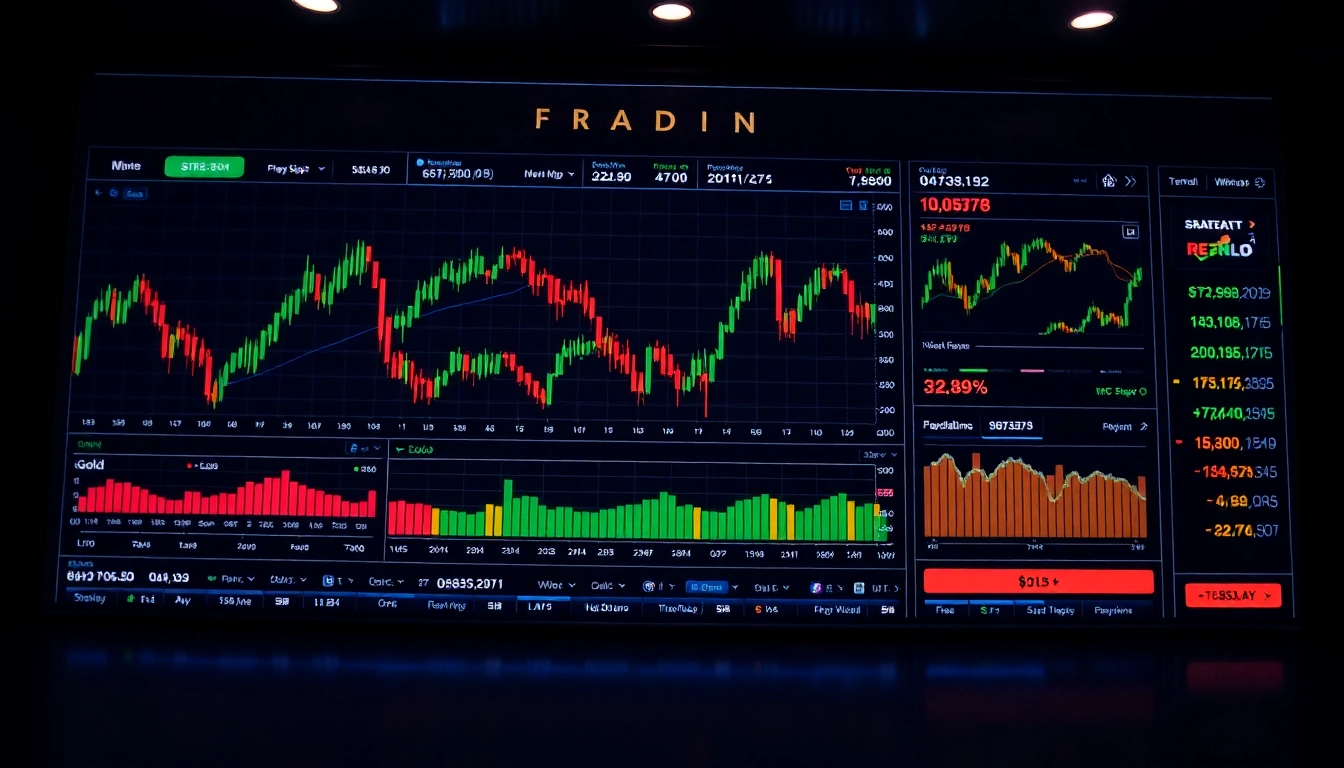Understanding the Current Forex Trading Market Landscape
The global forex trading market remains a highly dynamic environment influenced by a multitude of interconnected factors. Recent market shifts underscore the importance for traders and investors to stay informed about key economic indicators, geopolitical developments, and technological advancements shaping currency fluctuations. Among the critical tools for navigating this complex landscape is Forex Trading Market News, which consolidates real-time insights and expert analysis vital for making informed trading decisions.
Global Economic Factors Influencing Currency Fluctuations
Economic indicators such as inflation rates, employment figures, GDP growth, and monetary policy decisions significantly impact currency values. For instance, recent US labor data showing a robust job market has influenced dollar movements, with traders adjusting positions based on expectations of Federal Reserve policy shifts. Similarly, European economic resilience following marginal gains in stocks has kept the euro relatively stable amidst global uncertainties. Currency markets are also shaped by commodity prices, trade balances, and interest rate differentials, all of which feed into short-term volatility and long-term trends.
Major Currency Pairs to Watch This Week
Attention is focused on key pairs like EUR/USD, GBP/USD, USD/JPY, and emerging currencies such as the Chinese Yuan (CNY). Recent currency movements reflect the US dollar’s slight decline amid hopes of a potential rate cut, while the euro extends gains supported by positive economic data. The Japanese yen remains sensitive to safe-haven flows, especially amid geopolitical tensions. Emerging market currencies are trending upward marginally, driven by optimism about US-China trade negotiations and stabilizing commodity markets.
Impact of Geopolitical Events on Forex Stability
Geopolitical tensions, including US-China trade policies, European Union regulatory decisions, and Middle Eastern geopolitical conflicts, exert constant influence on forex stability. For example, recent comments from US officials calling for Fed Governor resignation heightened market uncertainty, pushing the dollar higher temporarily. Conversely, positive diplomatic developments can bolster investor confidence, leading to currency appreciation. Traders must monitor geopolitical headlines and assess their potential implications for short-term volatility and longer-term currency trends.
Analyzing Market Movements and Gold Prices
Record-Breaking Gold Prices and Their Implications
Gold has recently surged past $3,500 an ounce, marking a fresh all-time high. This rise is driven by a combination of inflation hedging, geopolitical uncertainties, and shifting US monetary policy expectations. As a traditional safe haven, gold’s upward momentum indicates investor caution and increased demand amid global economic turbulence. Such record prices influence Forex markets, especially currency pairs involving the US dollar, as investors hedge against USD fluctuations and seek stability in precious metals.
Correlation Between Forex Markets and Precious Metals
Historically, gold and the US dollar exhibit an inverse correlation; when the dollar weakens, gold tends to rise, serving as a hedge against currency devaluation. Currently, despite the dollar’s marginal decline, gold’s rally reflects broader risk aversion and inflation concerns. Forex traders often monitor precious metal prices as indicators of market sentiment. For example, rising gold prices may signal upcoming dollar weakness, prompting traders to position accordingly in major currency pairs.
How Commodity Prices Influence Currency Trading Decisions
Commodity prices, especially oil, metals, and agricultural products, significantly influence countries’ trade balances and, consequently, their currencies. Recent oil declines, while maintaining weekly gains, reflect complex supply-demand dynamics and US-China trade tensions. Countries like Canada and Russia, heavily reliant on commodity exports, exhibit currency movements aligned with commodity price trends. Forex traders incorporate commodity market analysis into their strategies to anticipate upcoming currency shifts, especially when geopolitical or economic data trigger sudden price movements.
Key Tools and Strategies for Forex Market Trading
Technical Analysis Techniques for Short-Term Trading
Technical analysis remains a cornerstone for short-term forex trading, focusing on chart patterns, trendlines, and technical indicators such as Moving Averages, RSI, and MACD. Traders leverage these tools for timing entries and exits, especially during volatile periods influenced by economic releases or geopolitical news. For example, breaking a significant trendline or an Overbought RSI signal can prompt timely trades aligned with emerging momentum.
Fundamental Analysis for Long-Term Investments
Long-term forex strategies rely on fundamental analysis, assessing macroeconomic indicators, monetary policies, fiscal health, and geopolitical developments. Understanding central bank policies, inflation trends, and trade balances helps investors position themselves ahead of major moves. For instance, anticipation of a US interest rate cut based on labor data can guide long-term currency positioning, as markets price in future policy expectations.
Risk Management and Setting Optimal Entry/Exit Points
Effective risk management involves setting stop-loss and take-profit levels based on volatility and support/resistance zones. Using proper position sizing and leveraging appropriate margin levels is crucial to avoid substantial losses. Incorporating tools like Bollinger Bands or ATR can help traders identify optimal entry and exit points, reducing exposure during unpredictable market swings.
Latest Market News and Events Impacting Forex
US Labor Data and Dollar Fluctuations
The recent US labor report indicating strong employment figures initially strengthened the dollar, but subsequent market sentiment shifted with expectations of a potential rate cut. The dollar’s value often moves ahead of and reactively to such data, illustrating the importance of timely analysis for forex traders faced with rapid price changes driven by macroeconomic releases.
Major Policy Announcements and Their Effects on Currency Pairs
Decisions such as central bank interest rate changes, fiscal policies, or trade agreements can produce immediate volatility. For example, the Bank of England’s recent warnings about the Libra cryptocurrency release imposed strict conditions, influencing GBP/USD trading patterns. Moreover, regulatory developments in the US, like SEC actions impacting cryptocurrencies, ripple into forex markets through risk sentiment shifts.
Market Reactions to Technological and Regulatory Developments
Innovations such as Meta’s exploration of AI partnerships and ongoing developments in digital currencies are reshaping trading landscapes. Technologies like AI-based trading algorithms enhance precision, while regulatory changes may introduce currency-specific risks or opportunities—necessitating traders to adapt swiftly to maintain competitive edges.
Future Outlook and Trends in the Forex Trading Market
Predictions Based on Historical Trendlines
Technical models suggest that if certain trendlines, like the 200-week moving average, hold, bullish momentum could continue for major currencies like Bitcoin and the US dollar. Historical trend analysis indicates that sustained adherence to such benchmarks often precedes significant trend shifts, providing traders with strategic entry points.
Emerging Currencies and Market Opportunities
Emerging markets with increasing political stability and resource exports—such as the Indian Rupee or Southeast Asian currencies—offer new investment avenues. Their relative growth prospects and increasing integration into global trade could position them as lucrative opportunities for traders willing to monitor geopolitical developments and economic reforms.
Technological Innovations Shaping Forex Trading Efficiency
Artificial intelligence, blockchain, and data analytics are transforming forex trading ease and accuracy. AI-driven predictive models enable faster decision-making, while blockchain assures secure transactions. Adoption of such technologies allows traders to execute strategies with greater confidence and efficiency in an ever-evolving marketplace.



